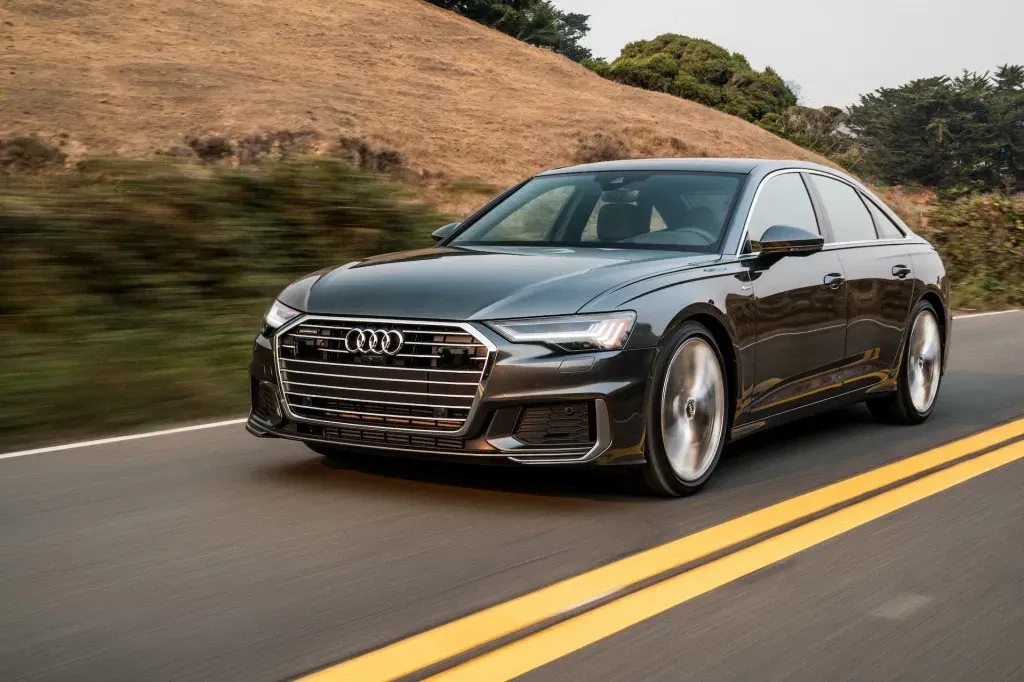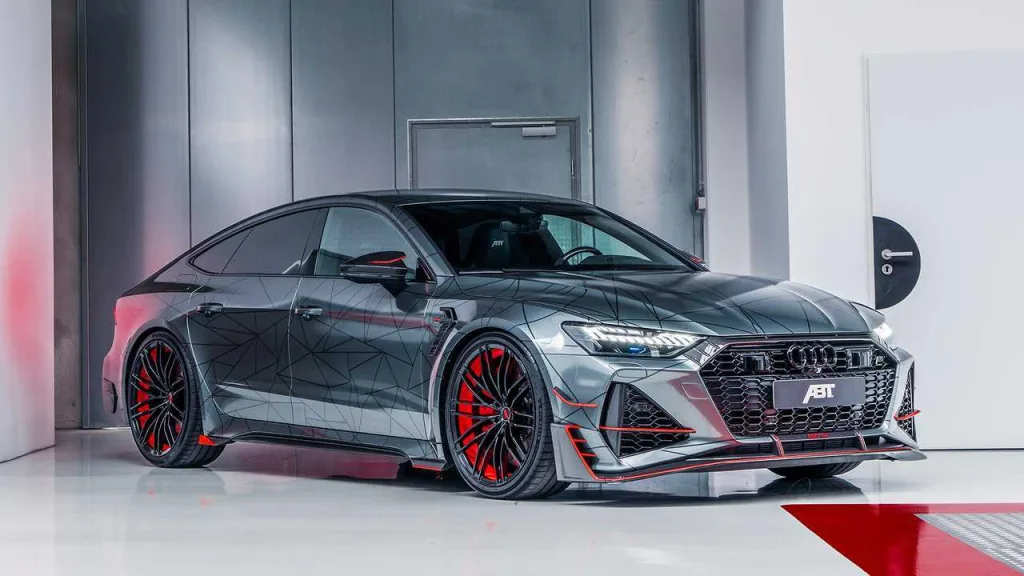In a bold strategic move that signals a new chapter for the German automaker in the world’s largest car market, Audi China has announced the creation of a dedicated electric vehicle brand exclusively for Chinese consumers. Set to be unveiled at Auto Shanghai 2025 on April 23rd, this new brand represents a significant departure from Audi’s traditional approach to global markets.
As I walked through Audi’s design studio in Beijing last week, the excitement was palpable. Engineers and designers moved with purpose, putting final touches on what could be the most important vehicle in Audi’s recent history. The first model from this China-exclusive brand doesn’t just represent a new car; it embodies a fundamental shift in how Western automakers approach the Chinese market.
“This isn’t simply about creating another electric vehicle,” explained Zhang Wei, a senior product strategist at Audi China. “It’s about recognizing that Chinese consumers have unique preferences and expectations that deserve a dedicated approach.”
What immediately stands out about this new brand is the absence of Audi’s iconic four-ring logo. Instead, vehicles will feature bold “AUDI” lettering, creating a visual distinction from the company’s global lineup. This rebranding strategy reflects a deep understanding of the Chinese market, where brand identity and local relevance carry significant weight.

The Strategic Partnership Between Audi SAIC
The collaboration between Audi SAIC forms the foundation of this ambitious initiative. By partnering with SAIC, one of China’s largest automotive manufacturers, Audi gains valuable insights into local consumer preferences while leveraging SAIC’s manufacturing expertise and supply chain networks.
This partnership has yielded impressive results already. The development of a dedicated Advanced Digitized Platform has reportedly reduced development time by 30% – a crucial advantage in China’s fast-paced EV market where innovation cycles are measured in months rather than years.
“The Audi SAIC joint venture represents a new model of collaboration,” noted automotive analyst Li Feng. “Rather than simply manufacturing existing global designs locally, they’re creating products specifically for Chinese consumers from the ground up.”
The new manufacturing facility in Changchun will have an annual production capacity exceeding 150,000 vehicles and create approximately 3,000 new jobs. This significant investment underscores the company’s long-term commitment to the Chinese market.
| Aspect | Details |
|---|---|
| Production Location | Changchun, China |
| Annual Capacity | Over 150,000 vehicles |
| Jobs Created | Approximately 3,000 |
| Focus | Exclusive electric vehicle production |
| Production Goal | Net carbon-neutral manufacturing |
New Audi Concept Car: Technical Specifications and Features
The new Audi concept car that will debut this exclusive brand boasts specifications that place it firmly in the premium segment of China’s increasingly competitive EV market. With a 100kWh battery pack and dual-motor all-wheel-drive setup, this vehicle aims to deliver both performance and range.
Perhaps most impressive is the vehicle’s 800V architecture, which enables ultra-fast charging capabilities. According to Audi, this system can add 370km of range in just 10 minutes of charging – addressing one of the primary concerns for potential EV buyers.
“The charging speed is revolutionary,” said Dr. Thomas Mueller, head of electrical systems development. “For urban Chinese consumers, where time efficiency is highly valued, the ability to add significant range during a quick coffee break represents a major leap forward.”
The interior space reportedly exceeds that of the A5 or A6 Avant, despite a relatively compact exterior footprint. This efficient packaging reflects the priorities of urban Chinese drivers, who value interior spaciousness within city-friendly dimensions.
| Specification | Detail |
|---|---|
| Power Output | 570 kW (764 horsepower) |
| Torque | 800 Nm |
| Acceleration | 0-100 km/h in 3.6 seconds |
| Battery Capacity | 100 kWh |
| Range | 700 km (CLTC) |
| Charging Capability | 370 km range in 10 minutes |
| Architecture | 800-volt system |

Understanding Audi China Exclusive Brand Strategy
The Audi China exclusive brand targets a significantly younger demographic than Audi’s traditional customer base. While the average Audi customer in other markets is approximately 55 years old, this new brand aims to attract consumers between 30-35 years of age.
This younger target audience has profound implications for product design, marketing strategy, and digital integration. Chinese millennials and Gen Z consumers have different expectations regarding technology, connectivity, and brand engagement than older demographics.
“The decision to create an Audi China exclusive brand wasn’t made lightly,” explained Marketing Director Chen Ling. “Our research showed that younger Chinese consumers want vehicles that reflect their digital lifestyle and forward-thinking values. They’re less concerned with traditional luxury markers and more interested in innovation and personalization.”
This strategic pivot comes at a critical time for Audi in China. With EV sales under 15,000 units in the first nine months of 2024, the company faces intense competition from both domestic manufacturers like Nio, Xpeng, and BYD, as well as international rivals like Tesla.
| Aspect | AUDI Brand | Traditional Competitors | Local EV Brands |
|---|---|---|---|
| Target Age | 30-35 years | 55+ years | 25-40 years |
| Brand Focus | Technology & Innovation | Luxury & Heritage | Tech & Affordability |
| Market Approach | Digital-first | Traditional dealership | Online + Experience centers |
| Price Positioning | Premium segment | Premium segment | Mid to Premium |
How Audi Fast Charging Technology Works
The Audi fast charging technology incorporated into the new EV concept represents the cutting edge of battery charging systems. The 800V architecture, similar to that used in Porsche’s Taycan, enables significantly higher charging rates than conventional 400V systems found in most electric vehicles.
“The benefits of Audi 800V architecture extend beyond just charging speed,” explained Dr. Sarah Chen, battery systems engineer. “The higher voltage allows for thinner cables, reduced weight, and less heat generation during fast charging, which helps preserve battery longevity.”
This system works by splitting the battery into two 400V sections during charging, effectively creating parallel charging paths that double the charging rate without increasing thermal stress on individual cells. When driving, these sections are connected in series to provide the full 800V for the powertrain.
For Chinese consumers living in high-density urban environments where home charging may not always be possible, this ultra-fast charging capability transforms the ownership experience. A quick 10-minute stop can add enough range for several days of typical city driving.

The Revolutionary Audi Pillar to Pillar Display System
Stepping inside the concept vehicle reveals one of its most striking features: a pillar-to-pillar 4K touch display that spans the entire width of the dashboard. This expansive screen serves as the primary interface for the vehicle’s AUDI OS operating system.
“We’ve reimagined the entire user experience,” said User Interface Designer Wang Mei. “Traditional instrument clusters and separate infotainment screens create visual fragmentation. Our pillar-to-pillar approach creates a unified digital environment that can adapt to different driving scenarios.”
The system incorporates facial recognition technology that can identify the driver and automatically adjust settings from seat position to climate preferences and favorite applications. This personalization extends to learning driver habits over time, anticipating needs based on time of day, location, and even weather conditions.
Advanced connectivity features allow seamless integration with China’s digital ecosystem, including popular platforms like WeChat, Alipay, and various streaming services. The car essentially becomes an extension of the user’s digital life, maintaining continuity between home, office, and vehicle.
Timeline for Audi EV Launch in China
The unveiling at Auto Shanghai 2025 marks just the beginning of an ambitious product rollout strategy. According to sources within the company, the production version of the concept will be available for purchase by late 2025, with two additional models following in rapid succession by mid-2026.
“The accelerated timeline reflects both the efficiency of our new development platform and the urgency of establishing a strong position in China’s premium EV segment,” noted Project Director Liu Jian. “We’re not just launching a car; we’re launching an entirely new approach to the Chinese market.”
This aggressive schedule aligns with the company’s broader electrification goals, which include expanding its electric vehicle portfolio across all core segments by 2027. The China-exclusive brand will serve as both a laboratory for innovation and a template for potential application in other markets.
| Timeline | Milestone |
|---|---|
| April 23, 2025 | Concept unveiling at Auto Shanghai |
| Q4 2025 | Production version market launch |
| Q2 2026 | Second model introduction |
| Q3 2026 | Third model introduction |
| 2027 | Complete portfolio across core segments |
Why Audi Without Four Rings Makes Strategic Sense
The decision to abandon Audi’s iconic four-rings logo for this China-exclusive brand represents perhaps the most visible departure from tradition. This move has sparked debate among automotive enthusiasts and brand strategists alike.
“The four rings carry tremendous equity in global markets,” explained branding expert Dr. Michael Wong. “But research indicates that Chinese consumers, particularly younger demographics, respond more positively to text-based branding that clearly communicates the manufacturer’s identity.”
This approach also creates a clear delineation between Audi’s global lineup and its China-specific offerings, allowing for greater flexibility in product development and marketing strategies. The bold “AUDI” lettering creates an opportunity to establish a fresh brand identity that resonates specifically with Chinese consumers.
Several other Western automakers are watching this experiment closely. If successful, it could trigger similar market-specific approaches from competitors eager to gain traction in China’s enormous automotive market.

The Future of Audi in China’s Competitive EV Landscape
As Audi embarks on this new chapter in China, the competitive landscape continues to evolve rapidly. Domestic manufacturers like BYD, Nio, and Xpeng have established strong positions, while Tesla maintains significant market share in the premium segment.
“The strategic move by Audi China represents a significant shift in how Western automakers approach the world’s largest car market,” noted automotive industry analyst Zhang Xiaofeng. “The question isn’t whether localization is necessary – it’s how deep that localization needs to go to resonate with Chinese consumers.”
Audi’s approach suggests that surface-level adaptations are insufficient. By creating an entirely new brand with China-specific products, manufacturing, and even visual identity, Audi is betting that comprehensive localization will yield better results than incremental adjustments to global products.
The success of this strategy will likely influence not just Audi’s future in China but how other international automakers approach this crucial market. If the AUDI brand succeeds in connecting with younger Chinese consumers, expect similar initiatives from other manufacturers eager to reverse declining market share.
Also Read: Tata Nexon vs MG Windsor Comparison: Detailed Guide in 2025
Frequently Asked Questions About Audi’s New China-Exclusive EV Brand
What is the name of Audi’s new China-exclusive brand?
The brand will be called “AUDI” (in capital letters) and will not use the traditional four-rings logo that identifies Audi vehicles in other markets. Instead, it will feature bold “AUDI” lettering as its primary brand identifier.
When will the first vehicle from this new brand be revealed?
The first concept vehicle will be unveiled at Auto Shanghai 2025 on April 23rd. The production version is expected to be available for purchase by late 2025.
What are the key specifications of the first AUDI electric vehicle?
The vehicle will feature a 100kWh battery providing up to 700km of range (CLTC standard), 800V architecture enabling ultra-fast charging (370km range in 10 minutes), 570kW (764 horsepower) output, and acceleration from 0-100 km/h in 3.6 seconds.
How is this new brand different from regular Audi vehicles?
Beyond the different branding (text instead of the four rings), these vehicles are being developed specifically for Chinese consumers with different design language, technology integration, and features. They’re built on a dedicated platform developed in collaboration with SAIC.
Who is the target customer for this new brand?
The AUDI brand targets younger Chinese consumers, with an average age of 30-35 years, compared to Audi’s traditional customer base, which averages around 55 years in other markets.
Where will these vehicles be manufactured?
The vehicles will be produced at a new plant in Changchun, China, with an annual production capacity exceeding 150,000 vehicles. The facility will create approximately 3,000 new jobs.
How many models will be offered under this new brand?
While the initial launch features one model, Audi has announced plans to introduce two additional models by mid-2026, with a goal of covering all core segments by 2027.
Will these vehicles be available outside of China?
Currently, there are no plans to sell these China-exclusive models in other markets. They are being specifically designed for Chinese consumers and regulatory requirements.
What is the significance of the 800V architecture?
The 800V system enables ultra-fast charging capabilities, adding 370km of range in just 10 minutes. It also allows for thinner cables, reduced weight, and less heat generation during charging compared to conventional 400V systems.
Conclusion: A Bold Experiment in Market-Specific Strategy
The launch of Audi’s China-exclusive EV brand represents one of the most interesting experiments in the automotive industry today. By creating a dedicated brand with China-specific products, Audi is acknowledging that the world’s largest automotive market deserves more than adapted global products.
With impressive technical specifications, cutting-edge technology, and a clear focus on younger consumers, this new brand has the potential to revitalize Audi’s position in the competitive Chinese market. The success or failure of this initiative will likely influence how other international automakers approach China in the coming years.
As the automotive industry continues its electric transformation, the ability to create market-specific solutions while maintaining global economies of scale will become increasingly important. Audi’s bold move may well become a case study in how to balance global brand identity with local market needs.
The strategic move by Audi China represents not just a new product line but a fundamental rethinking of how global automakers can succeed in increasingly sophisticated and distinctive regional markets. As Auto Shanghai 2025 approaches, all eyes will be on Audi’s revolutionary new approach to the world’s most important automotive market.


